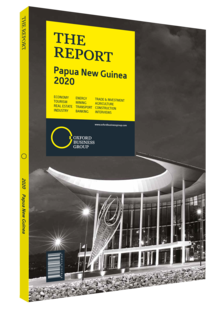How Papua New Guinea is bolstering local production capacity
In recent years Papua New Guinea has moved away from the long-held policy of tariff reductions towards import substitution and self-sufficiency. As the Covid-19 pandemic underlined the vulnerability of international supply chains, efforts to scale up local industrial production and decrease reliance on imported staples are taking on renewed importance.
Policy
In August 2017 PNG launched the National Trade Policy (NTP) 2017-32 with a view to increasing exports and supporting the expansion of small and medium-sized enterprises. At the same time, the government announced it would suspend the tariff reduction programme that had been in place since 1999. As a result, between 2018 and 2019 there were 323 tariff line increases in a bid to provide relief to local manufacturers against cheap imports.
Trade Agreements
Since the publication of the NTP the government has tended to focus on building bilateral trading relationships with large and influential countries, rather than multilateral agreements. To that end, the country has not signed the Pacific Agreement on Closer Economic Relations (PACER) Plus trade deal with Australia, New Zealand and other Pacific island states. Along with Fiji, which also withdrew from the pact, PNG expressed concern over the impact of reducing tariffs on goods from Australia and New Zealand on its nascent manufacturing industry. Despite not signing PACER Plus, the administration of Prime Minister James Marape has been keen to deepen engagement with Australia and New Zealand on a bilateral level. In November 2019 PNG announced it would receive a loan of $300m from Australia for budgetary support to secure essential government services. The agreement was described by Ian Ling-Stuckey, treasurer of PNG, at the time as “cheap and good debt from a long-standing and trusted partner” (see Economy chapter).
In addition to the budgetary support, in July 2019 the leaders of PNG and Australia agreed to start negotiations on a new, enhanced Comprehensive Strategic and Economic Partnership (CSEP). The CSEP will focus on several key areas, including security cooperation, bilateral trade and investment relations, governance, people-to-people and institutional links, development programmes and regional cooperation.
Meanwhile, New Zealand has also worked to deepen engagement with PNG under Prime Minister Jacinda Ardern’s Pacific Reset policy. In February 2020 Prime Minister Marape made an official visit to Auckland, where he reiterated his desire for a bilateral trade agreement as a way to solidify trade and economic cooperation between the parties.
China's Influence
Australia and New Zealand’s efforts to strengthen relations in the Pacific are motivated partly by the expansion of Chinese influence in the region. In 2018 PNG became the first Pacific island nation to formerly sign up to China’s flagship Belt and Road Initiative (BRI) for transnational infrastructure development (see Country Profile chapter). In line with its dealings with other Asia-Pacific powers, the Marape administration is looking to expedite discussions on a bilateral free trade agreement with China.
The extension of the BRI into the South Pacific comes as China has positioned itself as one of the region’s biggest aid donors over the past decade, injecting some $6bn into roads, ports and other projects through grants and concessionary loans. However, the economic shock of the Covid-19 pandemic has raised questions about the sustainability of debt that Pacific island states owe as they struggle to plug revenue shortfalls in 2020. China has emerged as PNG’s largest bilateral creditor in recent years, with annual debt repayments to the country forecast to increase by 25% by 2023.
Taking these concerns into account, it will be important for the development of domestic production capacity to be undertaken in tandem with efforts to diversify the country’s trade and investment partners, as well as to prioritise sustainable and trusted borrowing options in order to hedge against future debt risks.
You have reached the limit of premium articles you can view for free.
Choose from the options below to purchase print or digital editions of our Reports. You can also purchase a website subscription giving you unlimited access to all of our Reports online for 12 months.
If you have already purchased this Report or have a website subscription, please login to continue.

